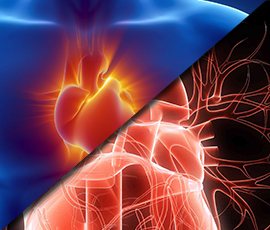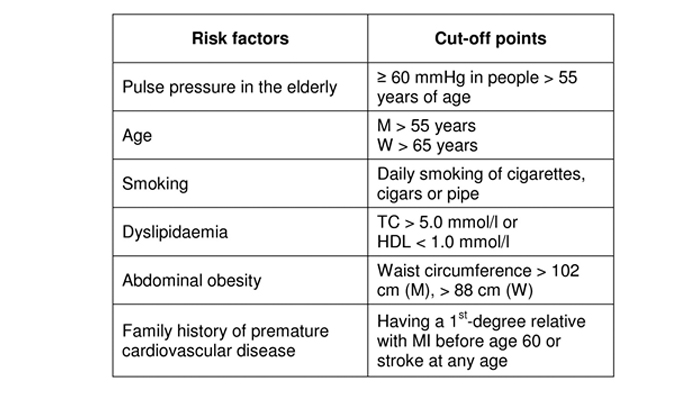
Myocardial infarction is a major cause of death and disability worldwide.
Coronary atherosclerosis is a chronic disease with stable and unstable periods.
During unstable periods with activated inflammation in the vascular wall, patients may develop a myocardial infarction.
Myocardial infarction may be a minor event in a lifelong chronic disease, it may even go undetected, but it may also be a major catastrophic event leading to sudden death or severe haemodynamic deterioration.
Manifestations
A myocardial infarction may be the first manifestation of coronary artery disease, or it may occur, repeatedly, in patients with established disease. Information on myocardial infarction attack rates can provide useful data regarding the burden of coronary artery disease within and across populations, especially if standardized data are collected in a manner that demonstrates the distinction between incident and recurrent events.
From the epidemiological point of view, the incidence of myocardial infarction in a population can be used as a proxy for the prevalence of coronary artery disease in that population. Furthermore, the term myocardial infarction has major psychological and legal implications for the individual and society. It is an indicator of one of the leading health problems in the world.
Clinical classification of different types of myocardial infarction.
•Type 1
Spontaneous myocardial infarction related to ischaemia due to a primary coronary event such as plaque erosion and/or rupture, fissuring, or dissection
•Type 2
Myocardial infarction secondary to ischaemia due to either increased oxygen demand or decreased supply, e.g. coronary artery spasm, coronary embolism, anaemia, arrhythmias, hypertension, or hypotension
•Type 3
Sudden unexpected cardiac death, including cardiac arrest, often with symptoms suggestive of myocardial ischaemia, accompanied by presumably new ST elevation, or new LBBB, or evidence of fresh thrombus in a coronary artery by angiography and/or at autopsy, but death occurring before blood samples could be obtained, or at a time before the appearance of cardiac biomarkers in the blood
•Type 4a
Myocardial infarction associated with PCI
•Type 4b
Myocardial infarction associated with stent thrombosis as documented by angiography or at autopsy
•Type 5
Myocardial infarction associated with CABG
Risk Factors

Treatment with Stem Cells
Permanent loss of cardiomyocytes and scar tissue formation after myocardial infarction (MI) results in an irreversible damage to the cardiac function.
Cardiac repair (replacement, restoration, and regeneration) is, therefore, essential to restore function of the heart following MI.
Existing therapies lower early mortality rates, prevent additional damage to the heart muscle, and reduce the risk of further heart attacks. However, there is need for treatment to improve the infarcted area by replacing the damaged cells after MI. The cardiac tissue regeneration can be possible with the application of stem cells and may be an effective therapeutic option.

Av. Masferrer South. Urb. Maquilishuat No. 1006. San Salvador, El Salvador. CA.
(503) 2268-5999 Fax. 2268-5910
www.stemcell-elsalvador.com - info@stemcell-elsalvador.com